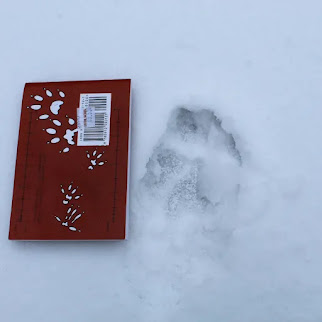Winter Animal Tracking
My dog is my chief scout when we go out hiking. He never fails to find animal tracks- mostly squirrels or deer but the more we venture from our little neighborhood we find more diversity. Animal tracking can be a fun and rewarding skill to learn. Starting with the basics of learning track identification to becoming proficient with the types of walking and running patterns that are characteristic to different family groups of animals. Tracking can be used to determine where to put trail cameras, where to hunt or trap and just to keep a n inventory of what is wandering around in your backyard.
Winter is one of the best times to practice tracking here in the UP. All the snow we get can form a perfect substrate for the critters impressions. After rain is a good time, too if you are looking in areas with mud or sand but tracks are made anytime animals move- it may just be hard to tell sometimes.
Another fun aspect of tracking is learning the gaits. Gaits are just the way in which animals move that leaves impressions in the ground. Walking for example is a common gait. A walk, 2x2 lope, and rotary lope are very common canid gaits. The hop gait is...you guessed it, from the rabbits. So, with some animals it is a tell tail sign while others exhibit multiple and change it up. Things like chase, play, injury etc. can effect the way these movements can look.
We hope that this information was helpful and you can put it to use while there is still snow on the ground! This has sure been a weird winter; Over here on the Western end of the UP it is snowing right now.








.png)

.png)
Comments
Post a Comment